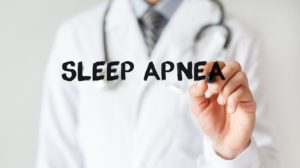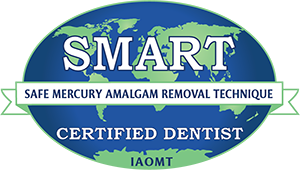How Your Dentist Uses Technology to Diagnose Sleep Apnea
December 26, 2019
 Patients struggling to get a good night’s rest may not be losing sleep because of a bad mattress. Instead, they might suffer from an undiagnosed sleep disorder. Obstructive sleep apnea causes a person to stop breathing frequently throughout the night from the airway narrowing. 22 million Americans live with the sleep disorder; however, it’s estimated 80% of people remain undiagnosed. Now, dentists play a crucial role in diagnosing sleep apnea in Southlake using a variety of technologies. State-of-the-art innovations can help you breathe easier to get the rest you need.
Patients struggling to get a good night’s rest may not be losing sleep because of a bad mattress. Instead, they might suffer from an undiagnosed sleep disorder. Obstructive sleep apnea causes a person to stop breathing frequently throughout the night from the airway narrowing. 22 million Americans live with the sleep disorder; however, it’s estimated 80% of people remain undiagnosed. Now, dentists play a crucial role in diagnosing sleep apnea in Southlake using a variety of technologies. State-of-the-art innovations can help you breathe easier to get the rest you need.
Technologies to Diagnoses Sleep Apnea
Obstructive sleep apnea most often occurs when the tongue or soft tissues in the back of the mouth collapse to cause a blockage in the airway. This restricts airflow, causing several pauses in breathing. New innovations allow your dentist to look for fluctuations in breathing or sleeping patterns, as well as certain physical abnormalities that can cause the interruptions. There are multiple technologies they may use to diagnose the disorder, such as:
Polysomnography
Better known as a sleep study, the test records brain waves, oxygen levels in the blood, breathing, and heart rate while sleeping. They can also record leg and eye movements. Typically, the testing is conducted at a hospital or sleep center. After the information is gathered, it’s sent to your dentist in Southlake to create a customized treatment plan.
Home Sleep Apnea Test
For years, cardiologists have sent patients home with monitors to gather data about their heart functions. Now, home testing isn’t limited to only cardiac patients. A small portable device tracks a patient’s breathing and oxygen levels. Although it isn’t as comprehensive as an overnight sleep study, it still provides crucial information for your dentist. Since is focuses more on breathing than sleep quality, it effectively measures pauses or absences in breathing.
Electromyography
Electromyography monitors electrical activity within specific muscles. The information is then amplified, displayed, and recorded. Electrode activity is monitored while a muscle contracts and rests. It also monitors changes in electrical waves to detect fluctuations with muscle tone during different sleep stages. This can help determine how often a patient reaches REM sleep, as well as interruptions from specific muscle movements, like those in the face.
Orthophos SL
The 3D scan not only detects dental issues but also breathing complications indicating sleep apnea. The panoramic imaging can allow your dentist to see certain factors that may cause obstructions in the airway, like tumors, cysts, or polyps.
Sleep Soundly Tonight
If you’re not feeling rested in the morning, it might be time to contact your dentist for a sleep apnea evaluation. Using elite technology, your dentist can create the customized treatment plan you need to restore your overall quality of life.
About Dr. Preetha Thomas
Dr. Preetha Thomas aligns her services to promote optimal wellbeing using the latest solutions that enhance the health of the mouth and body. If you’ve recently undergone testing for sleep apnea, Dr. Thomas can help interpret the data to create a customized treatment plan. Contact our office today to learn more.
No Comments
No comments yet.
RSS feed for comments on this post.
Sorry, the comment form is closed at this time.




